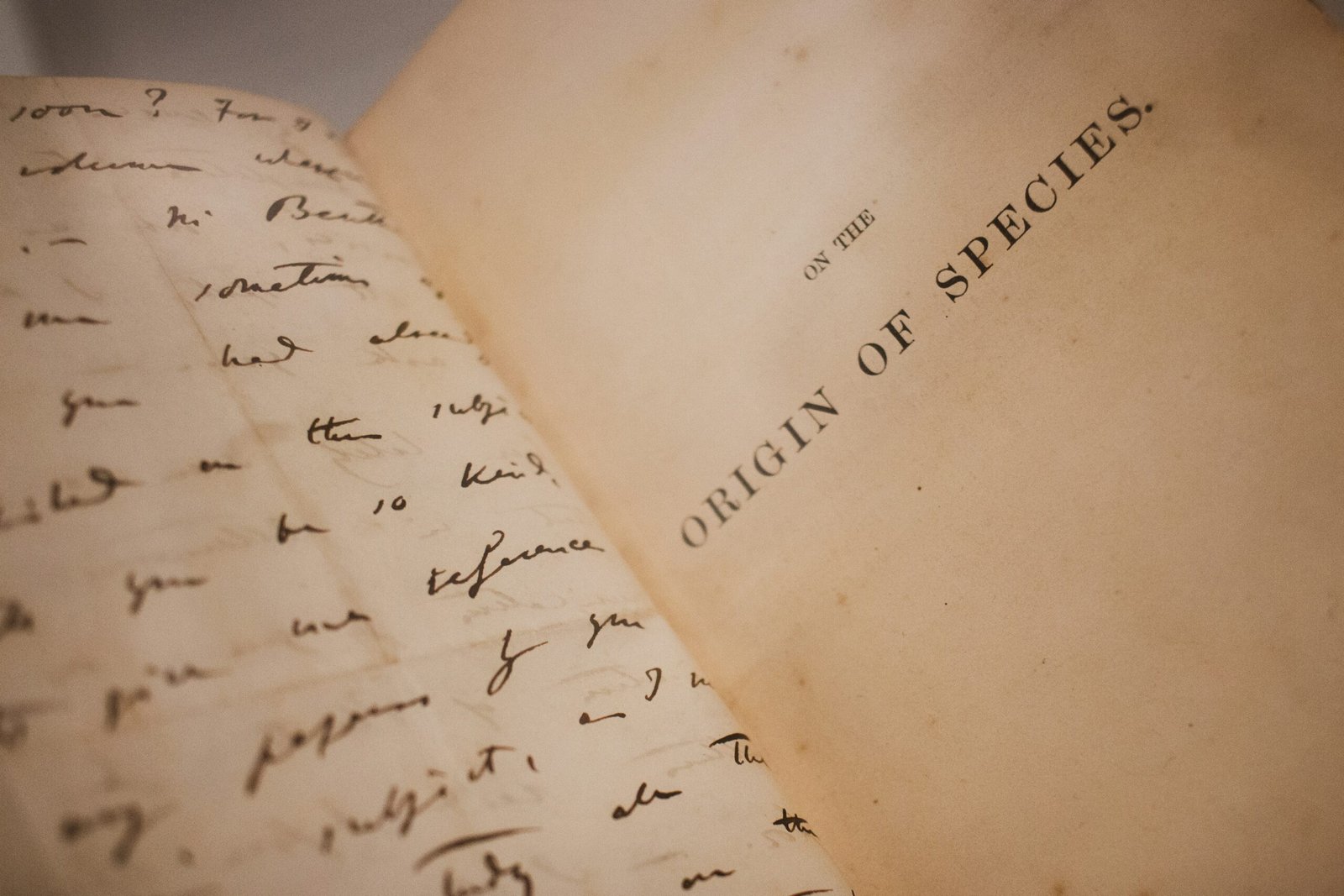Introduction to Handwriting
Handwriting, the act of writing by hand, serves as a fundamental means of communication that spans centuries and civilizations. It represents an intricate blend of art and practicality, shaping the way humans convey thoughts, emotions, and ideas in written form. Initially, the exchange of information was primarily oral, relying heavily on verbal storytelling and memory. However, as societies evolved, so too did the need for a more permanent method of record-keeping and communication.
The transition from oral traditions to written records marked a significant milestone in human history. The earliest known forms of writing can be traced back to ancient civilizations like the Sumerians, who used cuneiform script on clay tablets. This innovation allowed for the documentation of transactions, laws, and narratives, ultimately facilitating the growth of complex societies. Handwriting began to flourish, providing individuals with a means to preserve their thoughts for future generations.
As cultures progressed, the art of handwriting diversified in response to various social and technological influences. The introduction of materials such as parchment and ink revolutionized the writing process, allowing for more expressive and legible scripts. Different styles emerged, reflecting the aesthetics and philosophies of different periods, from the elegant calligraphy of the Middle Ages to the more functional cursive scripts that followed. These changes highlight how handwriting not only served practical purposes but also became an art form that represented personal expression and societal values.
The significance of handwriting in the modern era continues to evolve. Despite the rise of digital communication, the skill of handwriting remains crucial. It symbolizes individuality and personal connection in a world increasingly dominated by electronic interactions. Understanding the history of handwriting allows us to appreciate its enduring legacy as a vital form of communication throughout human existence.
Ancient Origins of Writing
The history of handwriting can be traced back to the earliest forms of written communication, which emerged long before the advent of modern scripts. Prehistoric cave paintings, found in various locations across the globe, represent some of the oldest examples of visual expression. These rudimentary illustrations, dating back tens of thousands of years, served as a means for early humans to document their experiences, rituals, and surroundings, establishing the foundational aspects of what would eventually evolve into handwriting.
As civilizations developed, so too did the complexity of their writing systems. One of the earliest known scripts, Cuneiform, originated in ancient Mesopotamia around 3200 BCE. This writing system employed a stylus to make wedge-shaped marks on clay tablets. Cuneiform was used for a variety of purposes, ranging from administrative record-keeping to literary compositions, illustrating the growing need for detailed written communication in expanding societies.
Simultaneously, in ancient Egypt, Hieroglyphics emerged as a sophisticated form of writing, characterized by pictorial symbols that conveyed both sounds and meanings. Hieroglyphics were used extensively for religious texts, monumental inscriptions, and administrative documentation. The materials employed in these early writing practices included papyrus, stone, and clay, with tools ranging from chisels and brushes to reeds and rudimentary ink, indicating a diverse approach to the inscription of thoughts and ideas.
These ancient scripts not only reflect the cultures of their respective societies but also laid the groundwork for the development of handwriting. The transition from pictorial forms to more abstract characters marked a significant evolution in communication, enhancing the efficiency and accessibility of written language. As these practices spread across different cultures, they set the stage for the myriad handwriting styles we recognize today.
The Development of Alphabetic Systems
The evolution of alphabetic systems represents a significant advancement in human communication and expression. Various cultures throughout history have created unique scripts that not only facilitated record-keeping and the dissemination of information but also shaped the way individuals engage with language. One of the earliest known alphabetic systems is the Phoenician alphabet, developed around the 12th century BCE. This script consisted of 22 consonantal letters and laid the groundwork for subsequent writing systems due to its simplicity and efficiency, serving as a model for neighboring cultures.
Building upon the Phoenician script, the Greek alphabet emerged around the 8th century BCE, introducing vowels to the written form of language, which significantly improved the representation of spoken words. The Greek letters became a vital tool for literature, philosophy, and science, allowing complex ideas to be shared and preserved. This advancement also emphasized the importance of written communication, further enhancing literacy rates across the region.
The Latin alphabet, derived from the Etruscan script, later adopted the Greek system and became the foundation of many modern writing systems, including the English alphabet. This transition marked a pivotal point in the development of written language, as the Latin characters spread throughout the Roman Empire, influencing various languages and cultures. The standardization of such alphabets was essential, allowing for a uniform approach to writing that facilitated greater accessibility to literature and education.
As these alphabetic systems evolved, they contributed to the decline of hieroglyphic and other complex writing systems, ultimately promoting literacy and allowing thoughts and ideas to be documented with greater ease. The impact of these early alphabets is still evident in modern handwriting, as many contemporary scripts and typographical styles draw inspiration from their historical predecessors.
Handwriting in the Middle Ages
During the Middle Ages, which spanned roughly from the 5th to the late 15th century, handwriting played a crucial role in the preservation and dissemination of knowledge. Central to this period was the creation of handwritten manuscripts, particularly within religious contexts. Monasteries became the intellectual hubs of society, where monks meticulously copied texts, ensuring the survival of classical and Christian works. This labor-intensive process not only preserved sacred texts but also expanded the body of knowledge available to future generations.
One notable development during this era was the art of illuminated manuscripts. These manuscripts were not merely functional but transformed into intricate works of art, often featuring gold leaf, vibrant colors, and elaborate illustrations. Illuminated texts served both aesthetic purposes and practical functions, as they helped in attracting readers’ attention and fostering a deeper appreciation for the written word. The beauty of these writings provided a visual context that enriched the religious and educational messages contained within them.
Furthermore, the Middle Ages witnessed the emergence of different handwriting styles that contributed to the evolution of written communication. Among these, the Carolingian minuscule emerged in the 8th century, characterized by its clarity and ease of reading. This style served to standardize texts across Europe, aiding in the spread of literacy and education. Contrastingly, the later Gothic script developed in the 12th century, with its ornate and elaborate forms, reflected the cultural and artistic ambitions of the time. Each handwriting style not only represented aesthetic choices but also played a significant role in the accessibility of knowledge, allowing texts to reach wider audiences.
The Renaissance and Reformation of Penmanship
The Renaissance, spanning roughly from the 14th to the 17th century, marked a significant turning point in the evolution of handwriting. This period was characterized by a revival of classical ideals, which influenced many aspects of culture, including the art of penmanship. The emphasis on humanism led to a renewed interest in individual expression, resulting in the development of new styles of writing. Among these, the Italic and Copperplate scripts emerged, reflecting the elegant and fluid nature that the Renaissance celebrated.
Italic handwriting, developed in Italy, was designed to facilitate faster writing while maintaining clarity and beauty. This style featured slanted, flowing letters that distinguished it from the more rigid Gothic scripts predominant during the Middle Ages. It gained popularity among scholars, writers, and scribes as a means of correspondence and documentation. The gracefulness of Italic writing epitomized the Renaissance’s appreciation for aesthetics and sophistication in the written word.
The Copperplate script, on the other hand, was distinguished by its fine lines and intricate forms, making it suitable for formal documents and invitations. This style showcased the growing significance of penmanship as an art form, highlighting the skill and precision required to produce elegant handwritten pieces. As copybooks circulated throughout Europe, individuals aspiring to refine their writing abilities eagerly practiced these styles, contributing to a broader cultural appreciation for beautiful handwriting.
The invention of the printing press by Johannes Gutenberg in the mid-15th century played a crucial role in shaping perceptions of handwritten documents. As printed materials became widely available, the necessity and status of handwritten works began to shift. While printing made information more accessible, it also created a contrast that elevated the importance of penmanship, positioning it as a form of art amidst the rise of mass-produced texts. Thus, the Renaissance not only shaped the styles of handwriting but also established an enduring legacy that continues to influence our understanding of writing today.
The Rise of Formal Penmanship in the 19th Century
The 19th century marked a significant turning point in the development of formal penmanship, positioning handwriting as a distinct subject of importance in educational curricula. With the advent of public schooling and a growing emphasis on literacy, formal penmanship gained recognition not only as a practical skill but also as an art form. Educational institutions began to incorporate formal penmanship courses, reflecting a societal shift towards valuing aesthetics and effective communication in writing.
This period saw the publication of numerous penmanship manuals that provided guidance to students and aspiring calligraphers alike. These manuals were often filled with intricate examples of various scripts and styles, serving as a tool for mastering the art of handwriting. Prominent calligraphers, such as Platt Rogers Spencer, whose Spencerian Script became widely adopted, contributed to the standardization of penmanship styles. These manuals outlined detailed techniques on letter formation, spacing, and flourishing, thus enhancing both the skill levels of writers and the overall beauty of written correspondence.
Additionally, the competitive nature of calligraphy emerged during this era as talented penmen sought recognition through contests and exhibitions. Calligraphers showcased their skills at state fairs and local competitions, fostering a vibrant environment of creativity and motivation. The desire to excel and achieve accolades led to numerous advancements in penmanship styles and techniques, ultimately contributing to the elevated status of handwriting as an esteemed skill. With the competitive spirit driving innovation, calligraphy transcended its functional origins, evolving into a respected art form.
In essence, the 19th century laid the groundwork for the enduring significance of formal penmanship. The combination of instructional resources and the culture of competition not only revitalized interest in handwriting but also established its lasting reputation as both a practical ability and an expressive art form. This evolution would continue to influence the perception of handwriting in the following decades.
The Impact of Technology on Handwriting
The evolution of handwriting has been significantly influenced by technological advancements, particularly from the late 19th century onward. The introduction of the typewriter marked a pivotal change in how individuals documented their thoughts and communicated. Originally designed to increase productivity, the typewriter allowed for faster and more legible text compared to handwritten notes. This shift in writing tools began to alter societal expectations surrounding written communication. As typewriters became commonplace in offices and homes, the emphasis moved away from neat penmanship, leading to a decline in formal handwriting instruction.
Further transformation occurred with the advent of computers in the late 20th century. The personal computer revolutionized the way in which we write by offering spell check features, formatting options, and ease of editing. Consequently, this shift initiated a decline in the necessity for maintaining traditional handwriting skills. Many educational systems have since adapted their writing curricula, often prioritizing keyboard proficiency over cursive writing or handwriting development. This trend has sparked considerable debate among educators and parents regarding the importance of handwriting as a fundamental skill.
Critics argue that the rise of technology has diminished the value of handwriting, asserting that it plays a crucial role in cognitive development, personal expression, and memory retention. Research indicates that the act of writing by hand engages different parts of the brain than typing does, which can enhance learning and retention. Conversely, proponents of technological writing tools advocate that digital writing enhances efficiency and is more aligned with contemporary communication methods.
As we navigate the balance between handwriting and technology, it is essential to recognize how these tools have transformed our writing habits and the way we convey information. The ongoing evolution of communication continues to challenge the relevance of traditional handwriting in a predominantly digital age.
Contemporary Handwriting Styles and Trends
The evolution of handwriting has led to a diverse range of styles, particularly in contemporary society where digital communication prevails. Despite the ubiquity of technology, interest in handwriting has seen a resurgence, manifesting through various modern trends that emphasize personal expression and creativity. This has given rise to distinct styles such as cursive writing, bullet journaling, and hand lettering, each with unique characteristics that cater to individual preferences.
Cursive writing, which has traditionally been taught in schools, continues to hold value for many. It embodies a fluidity that can convey elegance and personality. Notably, cursive has been noted for its aesthetic appeal, prompting enthusiasts to refine their skills and create elaborate scripts that infuse their personal touch into correspondence and artistic projects. The resurgence of cursive is often attributed to a greater emphasis on individuality and the tactile nature of writing by hand.
Another noteworthy trend is bullet journaling, which combines planning, organization, and creativity. This approach invites users to create personalized systems that suit their needs, often blending handwriting with illustrations, symbols, and colors. Bullet journals promote an active form of writing that serves as both a planner and a creative outlet, appealing particularly to those looking for more than just a digital solution to organization.
Hand lettering has also gained traction as an art form, merging typography and illustration to produce visually striking text. It allows practitioners to explore different fonts and styles in a hands-on manner, fostering a genuine appreciation for the craft of writing. The popularity of hand lettering workshops and social media sharing has further established it as a beloved trend within the creative community.
As we navigate through a technology-driven world, these contemporary handwriting styles illustrate a collective yearning for authenticity and self-expression. They remind us that, although fonts and keyboards dominate communication, the beauty of handwriting remains an integral part of our culture.
The Future of Handwriting
As we delve into the future of handwriting within a rapidly digitizing world, it is essential to consider the ongoing relevance of this ancient skill. While technology continues to advance, transforming how we communicate and share information, handwriting retains a unique value that machines cannot replicate. The personal touch associated with handwritten notes, letters, and creative expressions offers a depth that digital communication often lacks.
In recent years, there has been a noticeable resurgence in interest surrounding handwriting, particularly among younger generations. Many individuals are exploring the art of penmanship as a form of creative expression. Calligraphy workshops, journaling groups, and correspondence courses on handwriting have attracted enthusiasts eager to develop their skills. This revival highlights an appreciation for the tactile experience of writing by hand and the emotional connection it fosters.
Moreover, research suggests that handwriting enhances cognitive processes such as memory retention and comprehension. By engaging multiple senses while writing, individuals may deepen their understanding and connection to the content. This aspect of handwriting could lead to its re-emergence in educational settings, where teachers might integrate writing exercises to bolster learning and creativity. It can be a complementary tool in an age dominated by screens, helping students to develop critical thinking and analytical skills.
The potential renaissance of handwriting is not limited to education; it extends into personal communication as well. In a world increasingly filled with impersonal digital interactions, handwritten notes serve as meaningful gestures of care and connection. A handwritten letter can convey sentiments in a way that cannot be replicated by a text message or email, retaining emotional weight and intimacy. While advancements in technology will continue to shape our communication methods, the timeless art of handwriting remains a valuable and irreplaceable skill worth preserving.



